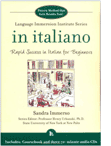Reviews:
Reporter World provides a variety of safety equipment, identification products, specialized high-visibility clothing, pertinent news, product reviews, book reviews and useful links specifically for reporters, writers, assignment editors, news correspondents, journalists, ENG crews, photographers, production staff, directors, segment producers, media security personnel, and freelancers: in short, anyone who is part of the news gathering, information reporting, or documentary film industries.
In this section we review various products and services of relevance to reporters, writers, correspondents, ENG teams and production staff. These products include cameras and accessories; computer hardware and software; scanners; printers; books and other products. Smaller, mini-reviews, are also available in other sections of this site including Products, Books and Movies.
We are constantly adding additional reviews to this section. If you have any suggestions for other products you would like us to review, simply e-mail us using the feedback address on our Terms of Service page. Please supply us with as much information as you can about the product (including name, manufacturer, model number) or book (including title, author, ISBN and publisher).
 Title: in italiano - Rapid Success in Italian for Beginners Title: in italiano - Rapid Success in Italian for Beginners
Authors: Sandra Immerso
Copyright: © 2004
Publisher: McGraw-Hill
ISBN: 0-07-140696-4
Relevance: Any reporter or correspondent posted in Italy will appreciate the quick and easy style of in italiano. The book/three-CD set presents 9 specific lessons that brings Italian-neophytes up to speed with many day-to-day situations. While it's true you won't be doing your on-air standups or important interviews in fluent Italian after investing only a few hours with in italiano, the average reader should be able to understand the language well enough to survive (and thrive) in an Italian-speaking assignment.
Review: In italiano focuses on the practical aspects of learning a new language, rather than the theoretical ones. Rather than concentrating on the sometimes mind-numbingly boring spelling, grammar and other technical details of a new language, in italiano demonstrates basic (and very useful) communication topics such as friendly greetings and formal introductions; good-byes and farewells; arriving at your hotel; shopping; how to make small talk; how to ask for directions and other issues. Consequently, in italiano is ideal for reporters and correspondents who must quickly to speak the language but really have no need to write with it. Of course, if writing Italian is your goal, in italiano can help you become familiar with the language -- but a more formal (and more detailed) book/CD combination may be more appropriate.
The in italiano course is organized into nine chapters, with each chapter containing two or three dialogues to illustrate the main goals of the lesson. Each chapter also comes with a list of new vocabulary words (Vocabolario) and additional idiomatic expressions (Espressiones). Yes, there is a bit of grammar (Grammatica) thrown in, but it's not too onerous and always relevant to the chapter. Written exercises and, of course, the well-designed audio CD portion supplement the book's lessons.
The book starts out assuming readers know nothing about Italian nor its pronunciation. In "Saluti" (Greetings), you learn how to greet and chat with native Italian speakers. You also learn how to introduce yourself and respond when they introduce themselves. Topics also covered include asking people how they are, where they are from and where they live.
One of the best aspects of in italiano is its introduction to Italian colloquialisms along they way. For example, when someone asks you in Italian, "Come va?" ("How's it going") or "Come sta Lei?" ("How are you?"), the book explains you can respond either with Benissimo ("Great") or "Cosi cosi, grazie" (so-so, thanks).
The chapter continues introducing more variants of the standard meet-and-greet dialogues. Phrases such as "Di dov'e Lei" ("where are you from?") and "Dove abita Lei?" (Where do you live?") are introduced as well as necessary grammar such as masculine and feminine nouns and the applicable definite articles. By the end of the chapter you know that the Italian alphabet has only 21 letters (with "j", "k", "w", "x" and "y" being used only in words of foreign origin).
To round out the chapter, the Italian language-specific rhyme called una filastrocca is introduced. These rhymes are important to teach new Italian learners (primarily school kids) the correct way to pronounce tricky sounds such as double consonants. Cognates -- otherwise foreign words that are visibly recognizable to English speakers -- are also introduced.
Chapter 2 -- Andiamo in Italia (Let's Go to Italy) -- builds on the basic concepts and words learned in the first chapter. Here readers learn how to tell time, how to ask for and get telephone numbers, the days of the week and the month of the year. Also discussed is the usage of the important Italian verb, andare ("to go"), and therefore, how to give directions to major sites -- and how to read important street signs.
Chapter 3 -- Partenza (Departure) -- introduces concepts involved with making purchases, colors, counting up to 100, and how to tell time up to the minute. The book also continues imparting Italian-related cultural tips. For example, the color, yellow, is historically related to the concept of mystery. Therefore, mystery novels written in Italian generally sport yellow covers.
Coming to Italy
Your arrival in Italy -- marked by your passage into Chapter 4 (L'arrivo a Italia) -- brings with it the vital verb "essere" ("to be"), the use of singular and plural forms, and adjective placement. Family related words including moglie ("wife") and marito ("husband") are introduced as are different nationalities and travel-specific topics. Although this chapter provides a solid introduction to key topics, readers would likely appreciate more detail and vocabulary depth.
Chapter 5 -- L'arrivo all'albergo -- signals your arrival at your hotel. Here you learn how to check in, ask for a specific room and deal with maid service. Also covered is how (and when) to use the informal "tu" form in conversation and the also complex verb avere ("to have").
Al restorante teaches how to order food and drinks in a restaurant and how to explain to the wait staff what you like and what you don't. It's here in Chapter 6 that readers also start putting multiple types of verbs together into complete sentences to ask questions about various types of transportation (Io vorrei andare a Venezia -- "I would like to go to Venice") and preferences ("Quale musica preferisce?" -- "What kind of music do you prefer?).
Chapter 7 -- Discorsi delle professioni -- introduces the concept of forming negatives in sentences and the simple future tense. Necessary to this is knowledge of the Italian verb, fare, ("to do" or "to make"), including expressions about the weather. And, as the chapter title indicates, the book also shows various vocabulary words for professions (from "l'architetto" -- architect to "l'operaio" -- worker) and the use of possessives.
Servizi in Italia, the second to last chapter, shows how to chat about health, sports and other daily routines. Also included in this chapter are dozens of Italian words for various body parts and how to explain to a health care provider what hurts. Reflexive verbs (ones in which the pronoun comes before the verb) are also introduced.
Finally, in Chiamata da Firenze e Venezia, the book introduces the past using verbs that take "avere" or "essere". Many useful vocabulary words relating to the home and home furnishings (including the living room, the kitchen, the bathroom, the bedroom, the dining room, the cellar, and the garage) are demonstrated. Dozens of words relating to clothing from gloves to shoes are given as well.
Alas, the numbering scheme...
There is no numerical correspondence between the lessons in the book and the particular audio track number on the CDs. Sure, each audio track is consecutive, but there is no quick way to search for a specific track based on lesson number. To get around this, you have to copy the entire CD into your computer or iPod and then rename each track. This is not a particularly elegant solution to the high tech problem -- but it does work if you have the patience.
We also found that the lessons could sometimes appear disjointed as many disparate topics are introduced in the same chapter. This is especially so in the last few chapters where key concepts such as verb tenses are showed along with other topics such as clothing or colors. While we applaud the inclusion of these topics in the book, one reviewer thought it might be a good idea to have more chapters -- with less (but directly related) content in each.
Also, some beginners will find the CD-based dialogue moves a bit quickly, making it difficult to catch every nuance of the spoken words. This means frequent rewinds are necessary in difficult passages until the new works or phrases sink in. This constant futzing about to listen to the specific passage may frustrate some impatient readers.
Overall:
We were quite impressed with in italiano. The two instructional CDs as well as the third (testing) CD provide a solid introduction to speaking Italian. Reporters and photojournalists working in Italy and other Italian-speaking regions such as Switzerland, would benefit from this book/CD combination.
End of Review
In the same series: En Francais by Marc Bendali, Marie-Paule Mahoney
Have your say.
You can give us your feedback by visiting our Terms of Service page.
Buy this book.
If you wish to buy this book right now, please click here.
Read other reviews.
If you wish to return to the main Reviews page, please click here.
|
|
|





